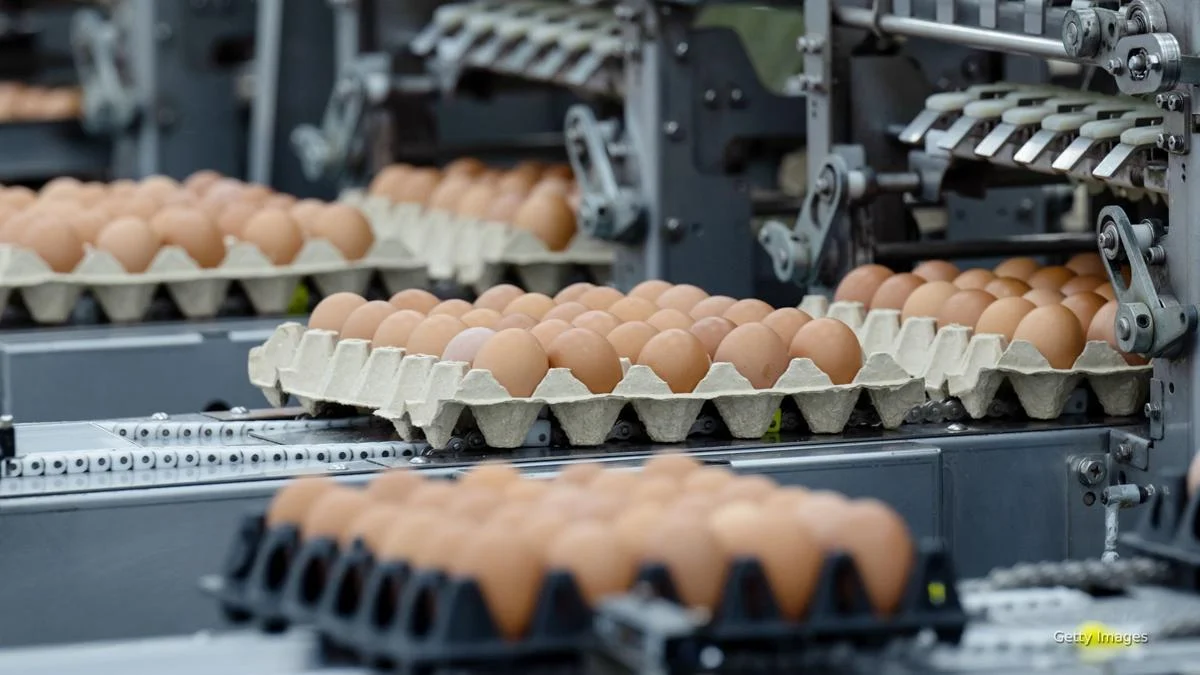In recent months, egg prices in Maine have skyrocketed, causing concern for both consumers and producers. The unprecedented rise, influenced by factors such as supply chain disruptions, avian flu outbreaks, and increased production costs, has placed local farmers in a challenging position. While consumers are feeling the pinch, farmers are scrambling to adapt to the new normal while striving to meet demand.
The Numbers Behind the Spike
According to the U.S. Department of Agriculture (USDA), egg prices in Maine have risen by nearly 60% compared to the same period last year. National trends mirror this surge, but Maine’s rural economy and reliance on local production make the impact especially acute. The price hike is attributed primarily to the avian flu outbreak, which has led to the culling of millions of hens across the country. Additionally, inflation and rising feed costs have exacerbated the issue.
In Maine, where agriculture is a cornerstone of the local economy, the situation has forced many farmers to make tough decisions. “The cost of chicken feed has doubled in just a year,” said Emily Harding, a farmer in Cumberland County. “And that’s not to mention fuel prices and labor shortages.”
Adapting to Higher Costs
To cope with rising costs, farmers are employing a variety of strategies. Many are turning to alternative feeds, such as food waste and forage crops, to cut expenses. Others are investing in energy-efficient technologies to reduce utility bills.
“The key is resilience,” said Roger Thompson, a free-range egg producer in Penobscot County. “We’ve started collaborating with local businesses to source leftover grains and produce, which helps us reduce our feed costs and also cuts down on waste.”
Farmers are also finding innovative ways to market their products. Community-supported agriculture (CSA) programs, where customers pay upfront for regular deliveries of farm-fresh goods, have seen an uptick in subscriptions. CSAs offer a financial buffer for farmers and provide consumers with consistent access to eggs and other produce.
Consumers Feeling the Impact
While farmers are adjusting their operations, consumers are facing sticker shock at grocery stores and markets. The average price for a dozen eggs in Maine now hovers around $5, significantly higher than the national average. Many shoppers are turning to local farmers for fresher, more affordable options, further fueling demand for small-scale producers.
To help residents manage rising food costs, government initiatives like the Supplemental Nutrition Assistance Program (SNAP) have been expanded. The USDA provides resources for eligible families, and organizations such as the Maine Department of Agriculture encourage farmers’ markets to accept SNAP benefits. These efforts aim to alleviate some of the financial burden on households while supporting local agriculture.
Long-Term Challenges for Farmers
Despite these coping strategies, the challenges remain daunting. Avian flu outbreaks continue to threaten poultry populations, with Maine’s Department of Agriculture monitoring the situation closely. The state has implemented stringent biosecurity measures to prevent further spread, including mandatory testing and restrictions on poultry movement.
For small-scale farmers, the high cost of compliance with these measures adds another layer of financial strain. “We’re spending hundreds on tests and vaccinations just to keep our flocks safe,” said Harding. “It’s necessary, but it’s a heavy burden.”
Environmental factors also pose a risk. Harsh winters in Maine can increase heating costs for poultry barns, while unpredictable weather patterns make it difficult to grow feed crops. Farmers are advocating for greater support, including subsidies for renewable energy and insurance programs tailored to small-scale operations.
A Silver Lining
Amid these challenges, there is some optimism. The increased focus on local food systems has strengthened community bonds. Farmers and consumers alike are recognizing the value of supporting Maine’s agricultural heritage.
Organizations such as the University of Maine Cooperative Extension offer training programs to help farmers improve efficiency and resilience. Meanwhile, initiatives like Maine’s Buy Local campaign encourage residents to prioritize locally sourced goods, keeping money within the state’s economy.
“I’ve seen more people at the farmers’ market this year than ever before,” said Thompson. “It’s heartening to know that even in tough times, our community has our back.”
What Lies Ahead
As Maine’s egg farmers navigate these turbulent times, their resilience serves as a testament to the strength of the state’s agricultural sector. However, the long-term sustainability of egg production will require coordinated efforts from policymakers, industry leaders, and consumers.
State officials are exploring additional measures to stabilize the market, including grants for small farms and investments in agricultural research. Federal programs like the USDA’s Emergency Assistance for Livestock, Honeybees, and Farm-Raised Fish Program also provide critical support during crises.
For now, local farmers remain committed to keeping Maine’s egg supply steady. Their adaptability and determination offer hope that the industry can weather this storm and emerge stronger.
In the meantime, consumers can do their part by shopping locally and staying informed about resources like SNAP benefits and Maine’s food assistance programs. Supporting local farmers is not just about buying eggs—it’s about preserving a way of life that defines Maine’s rural communities.
For more information on assistance programs and local food initiatives, visit the Maine Department of Agriculture and the USDA’s Food and Nutrition Service.
Conclusion
Maine’s soaring egg prices highlight the delicate balance between agriculture and economic pressures. While farmers face numerous obstacles, their ingenuity and community support continue to shine through. By prioritizing local solutions and fostering collaboration, Maine can ensure a sustainable future for its egg industry and beyond.
Disclaimer – Our team has carefully fact-checked this article to make sure it’s accurate and free from any misinformation. We’re dedicated to keeping our content honest and reliable for our readers.








